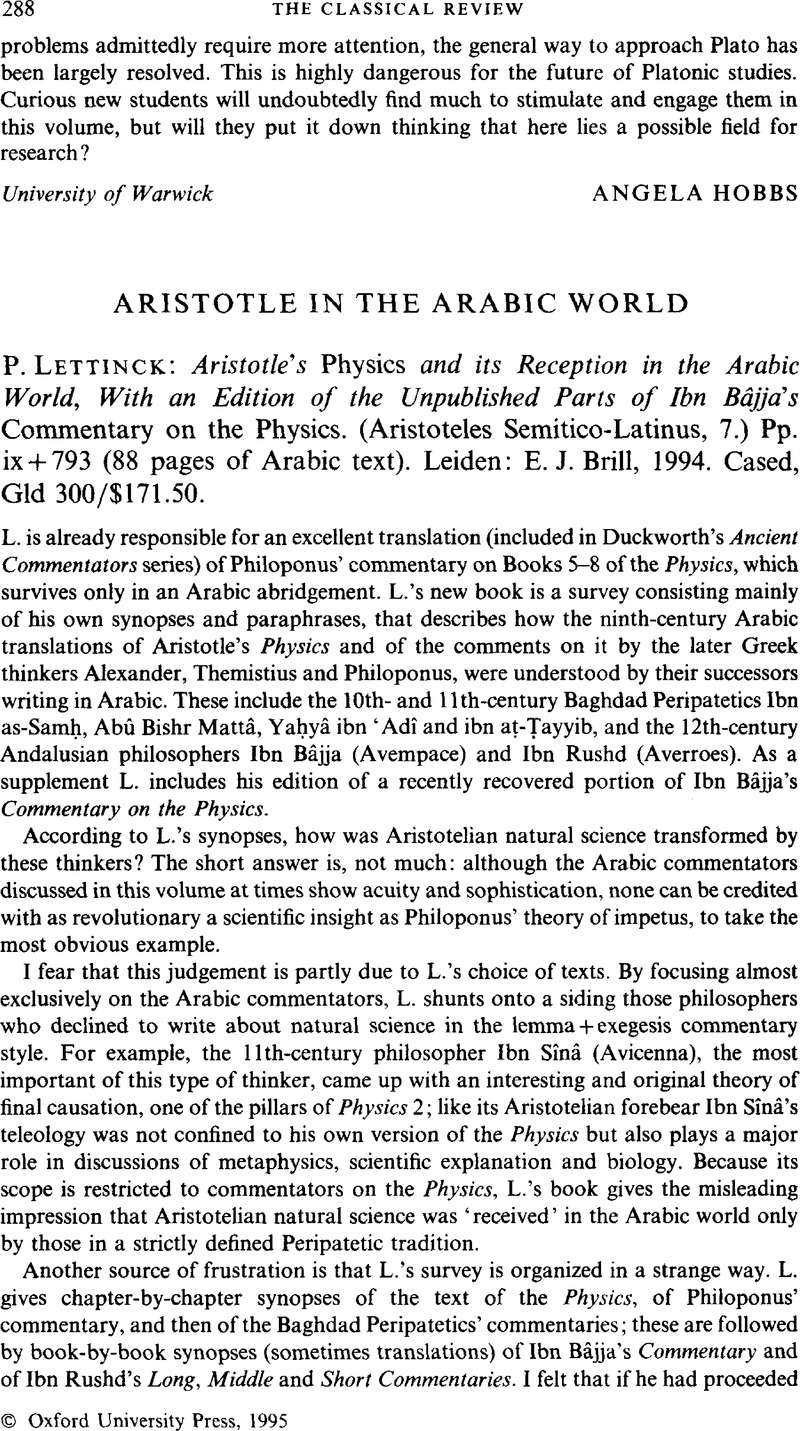No CrossRef data available.
Published online by Cambridge University Press: 16 February 2009

1 On Ibn Sînâ's theory of mayl, see his Tabî'iyyât [Physics] 4.12, 313–19, Ilâhiyyât [Metaphysics] 9.2, 381–93, and Fi s–samâ' [De Caelo] 1, 3; see also Zimmerman, F. W., ‘Philoponus’ impetus theory in the Arabic tradition' in Sorabji, R., ed., Philoponus and the Rejection of Aristotelian Science (London, 1987), pp. 121–129.Google Scholar On the difference between Philoponuš and Ibn Sînâ's versions of the theory, see Hasnawi, A., ‘Aspects de la synthèse avicennienne’, in Sinaceur, M. A., ed., Penser avec Aristote (Paris, 1991), 233–235;Google Scholar and on Ibn Sîinâ's legacy to Buridan and Descartes, see Menn, S., ‘Descartes and some predecessors on the divine conservation of motion’, Synthese 83 (1990), 223–226.CrossRefGoogle Scholar
2 The copy–editing is also sloppy. Even for a book so large, there are a lot of mistakes: too many in the English text to mention, and several in the Arabic transliterations. Two instances where errors in transliterating the Arabic affect the sense are page 262, line 10: ‘ġayr mudrik’ (‘not perceiving’) should read as ‘ġayr mudrak’ (‘imperceptible’); and 598, 24: ‘al–âlim assaġîr’ (‘the young scholar’!) should read as ‘al–âlam as–saġîr’ (‘the microcosm’).